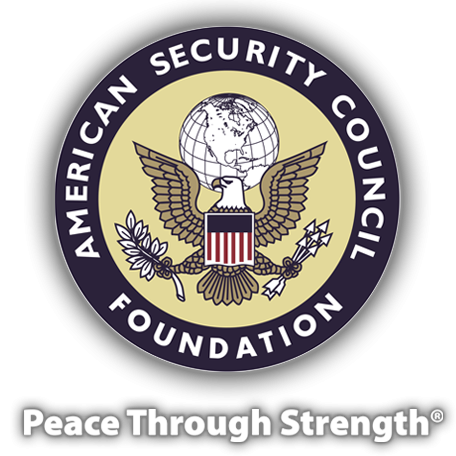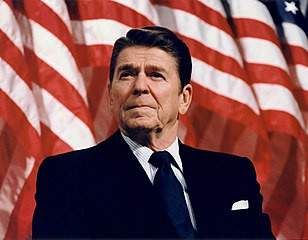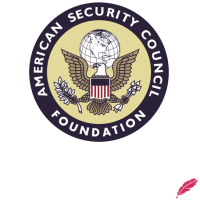Reagan’s Lessons for Cold War 2.0
By Alan W. Dowd, ASCF Senior Fellow
September 2022—Vladimir Putin’s Russia has launched wars of aggression against democratic Ukraine and democratic Georgia; propped up regimes that gas (Syria) and starve (Venezuela) their own people; hacked and attacked the U.S. power grid; threatened U.S. allies in the Indo-Pacific and Europe; and unleashed intelligence agencies and cyber-pirates to wreak havoc across the Free World. Xi Jinping’s China has erased Hong Kong’s independence; attacked democratic India; blockaded and threatened attacks against democratic Taiwan; massively expanded its nuclear arsenal and nuclear strike capabilities; exploded military spending by 517 percent (since 2000); built the world’s largest navy; conducted a relentless cybersiege of the Free World; unleashed through incompetence a crippling global pandemic; claimed a vast swath of the South China Sea and constructed illegal militarized islands to back up those claims; and expanded its insidious influence over American culture and education. These two authoritarian behemoths are holding large-scale wargames routinely—the latest involving 50,000 troops, 140 aircraft and 60 warships. And they lead an authoritarian bloc spanning Europe (Belarus) the Indo-Pacific (North Korea), Southwest Asia (Iran, Afghanistan, Syria) and the Americas (Venezuela, Cuba).
These are some of the reasons why I contend that we have entered what I call Cold War 2.0. Likewise, historian Niall Ferguson argues “Cold War II” is underway. Henry Kissinger says we are in “the foothills” of a new cold war. Cold War-style enemies demand Cold War-style policies.
History
Our starting point must be a recommitment to military deterrence—what President Ronald Reagan called “peace through strength.” Reagan didn’t invent the idea. Dating to the days of the Roman Empire, wise and shrewd leaders have recognized that military readiness paradoxically keeps the peace. The Romans’ phrase for it was si vis pacem, para bellum: “If you wish for peace, prepare for war.
”Centuries later, President George Washington counseled, “There is nothing so likely to produce peace as to be well prepared to meet an enemy.”
“We infinitely desire peace,” President Theodore Roosevelt declared at the beginning of the 20th century, “and the surest way of obtaining it is to show that we are not afraid of war.”
After the West gambled civilization’s very existence in the 1920s and 1930s on hopes that war could somehow be outlawed, the men who crafted the blueprint for waging Cold War I returned to peace through strength. Winston Churchill urged “defense through deterrents.” President Harry Truman called NATO “an integrated international force whose object is to maintain peace through strength.” President Dwight Eisenhower explained, “Our arms must be mighty, ready for instant action, so that no potential aggressor may be tempted to risk its own destruction.” President John Kennedy vowed to “strengthen our military power to the point where no aggressor will dare attack.”
Reagan steered Cold War I to a peaceful end by noting, “None of the four wars in my lifetime came about because we were too strong…Our military strength is a prerequisite for peace.
”After a decade of one-sided détente, a decade of arms-control treaties that Washington assiduously followed and Moscow constantly flouted, a decade of U.S. defense cuts and Soviet military expansion, Reagan outlined a plan to restore “defense capability that provides a margin of safety for America.” His government would do “whatever it takes to be strong enough that no other nation will dare violate the peace.” Countering those who would blame America for taking up the shield of self-defense, Reagan argued that “Firmness based on a strong defense capability is not provocative…Our best hope of persuading them to live in peace is to convince them they cannot win at war.”
Washington’s approach to national security has been many things since the end of Cold War I—adrift, haphazard, halfhearted, shortsighted, unfocused, distracted, impatient, the very opposite of America's approach to waging and winning Cold War I—but it has definitely not been premised on peace through strength. Between 2009 and 2013—even with Beijing on the rise and Moscow on the march— Washington scrubbed NATO missile-defense system in Poland and Czech Republic, withdrew all of America’s heavy armor from Europe, deactivated the U.S. Navy’s North Atlantic-focused 2nd Fleet and shut down the U.S. Army’s Germany-based V Corps. The Navy fleet was chopped down from the 594 ships it boasted after the Reagan rebuild to just 297. The Air Force is relying on a 70-year-old airframe as the backbone of the bomber fleet. The Army—worn down fighting counterinsurgencies in Afghanistan and Iraq—is unable to attract new recruits or retain personnel.
Good News
That’s the bad news. The good news is that a bipartisan majority in Congress appears committed to bigger defense budgets for the foreseeable future.
More good news: U.S. allies in Europe and the Indo-Pacific have awakened to the doorstep dangers of Cold War 2.0—and are returning to military deterrence.
The Quad partnership—Japan, India, Australia and the U.S.—is collaborating on military maneuvers and joint training, partnering on 5G security and cyber-security, and sharing satellite imagery, intelligence, weapons systems and technology.
The AUKUS alliance—enfolding Australia, the U.K. and the U.S.—is developing hypersonic missiles, counter-hypersonic systems, electronic-warfare systems, artificial intelligence and nuclear-powered submarines.
All of these Indo-Pacific partners are pouring resources into defense. Japan has increased defense spending annually for a decade running. Australia is increasing defense spending 40 percent this decade.
In Europe, NATO is massively expanding its rapid-response force—from 40,000 troops to 300,000. NATO is fielding new multinational battlegroups where they are most needed—in Bulgaria, Hungary, Romania, Slovakia, Estonia, Latvia, Lithuania and Poland.
The United States is standing up a permanent V Corps Headquarters Forward Command in Poland; basing a Brigade Combat Team in Romania; deploying armored, aviation, air defense and special operations forces in the Baltics; stationing additional warships in Spain; basing two squadrons of F-35s in Britain; and moving additional air-defense assets to Germany and Italy. With 102,000 troops now in the European theater, U.S. troop strength has increased 30 percent since late last year. All of this represents a complete—and welcome—reversal of the shortsighted decisions of 2009-13.
The U.S. is not alone in beefing up NATO’s deterrent capabilities. Britain, France and Denmark have sent troops to Estonia. Canada, Czech Republic, Albania, Italy, Poland, Spain, Montenegro, Slovenia and Slovakia have sent troops to Latvia. Germany, Czech Republic, Belgium, Iceland, Netherlands and Luxembourg have sent troops to Lithuania. Britain, Romania and Croatia have sent troops to Poland. Czech Republic, Germany, Poland, Luxembourg and Slovenia have sent troops to Slovakia. France, Italy, Belgium, Poland and Luxembourg have sent troops to Romania. Dutch and Spanish warplanes have deployed to Bulgaria. French, Belgian and Dutch troops are standing up a new NATO base in Romania.
Germany is nearly doubling defense spending to 2 percent of GDP and constructing an air-defense network spanning Central and Eastern Europe. Poland—thrust to the frontlines of Cold War 2.0 by Putin’s invasion of Ukraine—has announced that its defense budget will jump to 3 percent of GDP
next year. Latvia is increasing defense spending by 13 percent this year. The Netherlands, Norway and Romania are all increasing defense spending significantly. And Finland and Sweden are adding their formidable military capabilities, technological prowess and optimal geographic placement to the alliance—significantly enhancing NATO’s strategic depth and deterrent posture.
Together, these represent necessary steps the Free World must take to defend itself from the Beijing-Moscow bloc. But Cold War I reminds us that the Free World must not be solely defensive or passive in confronting the enemies of freedom. Part two of this series will explore some of those lessons.












